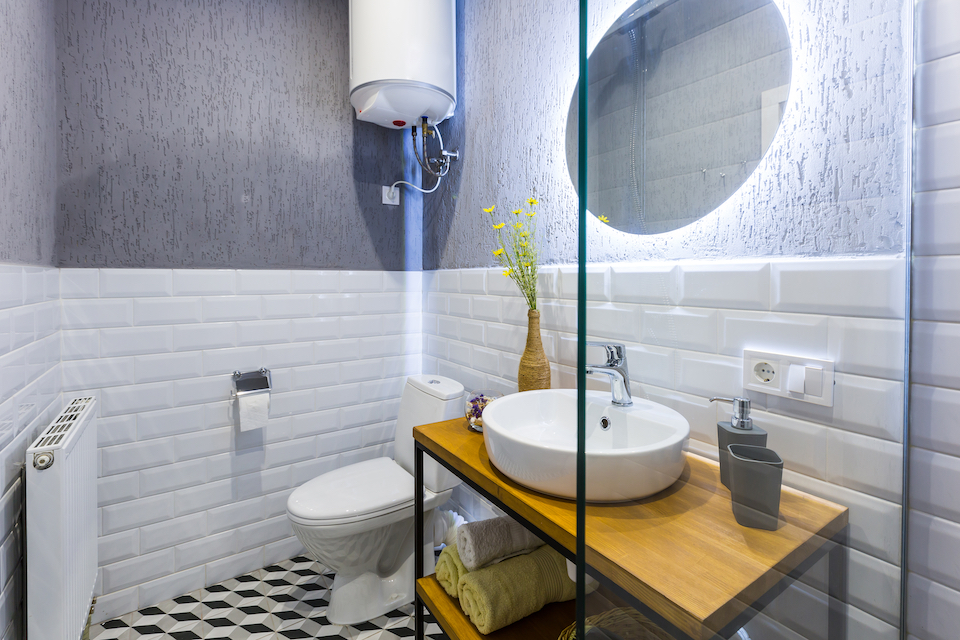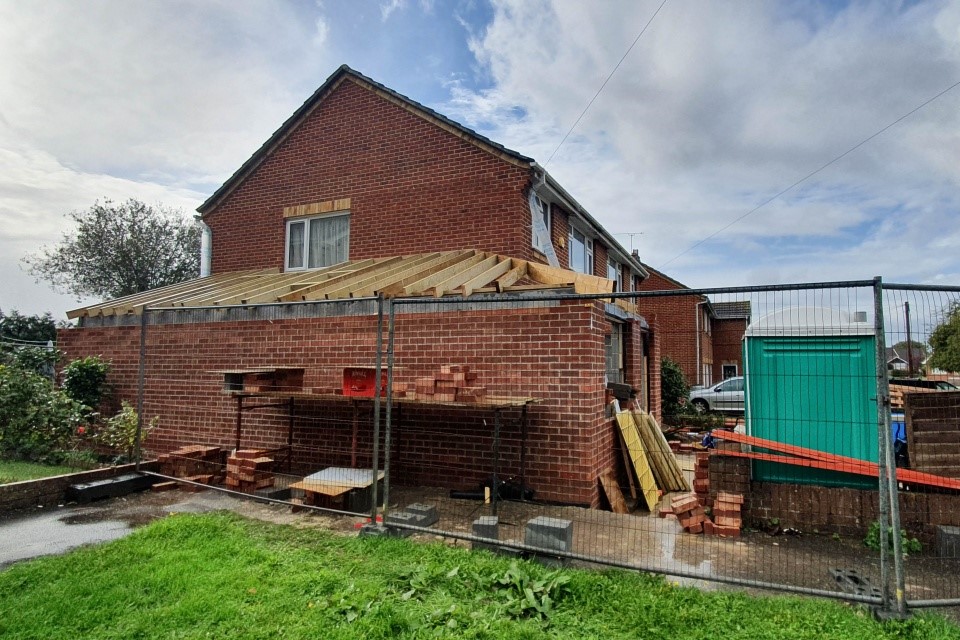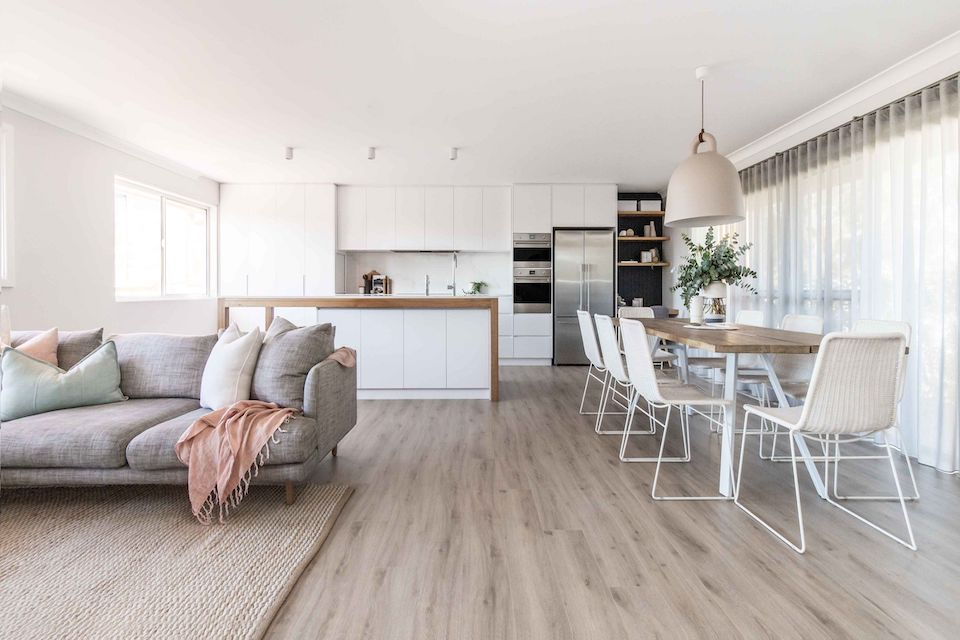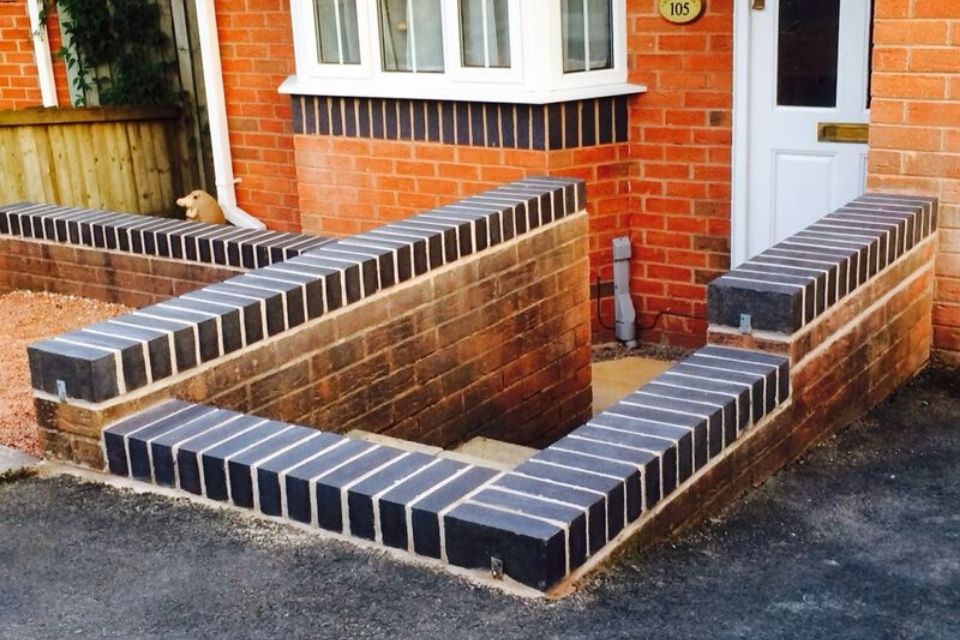How Much to Install a Downstairs Toilet?
Understairs toilets make hosting as well as entertaining much easier because a toilet is always nearby. You also won't be worried about trying to make your master bathroom available to visitors.
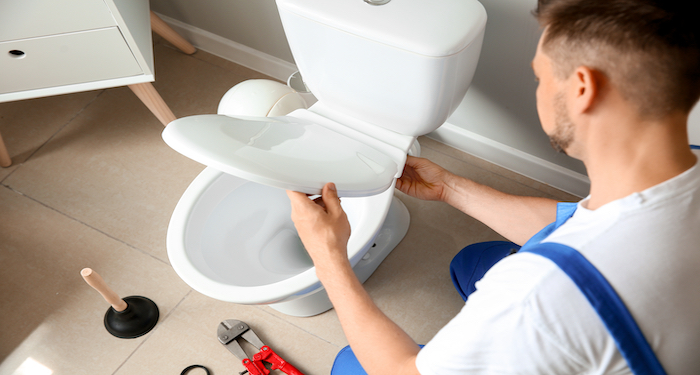
You may not require additional showers or baths, but two or three toilets can make a significant difference in a home when compared to just one. A second bathroom may also enhance the home's value.
In this section, we will go through a variety of costs to install a new understairs toilet, so if you want one installed in your home, then here you will find out how much you need to budget to finish the job!
How much would it cost to install a cloakroom if you've decided this is the best option for you? The answer depends on a few factors.
- Whether you're renovating a current understairs toilet or building a new one, the size of the bathroom, the bigger it is, the more supplies and time it takes to complete the job
- Existing space or home addition? Are you modifying an existing space by adding a new cloakroom? This will obviously be less expensive than building an extension to your home
- The proximity of the potential bathroom to existing plumbing. The greater the distance, the higher the cost
The cost of installing a new toilet under your stairs can range from £2,000 to £4,000, based on the quantity of work required.
For example, you may need to wall off the understairs area, build a window, or have a space where all of this is already in place.
Fixtures and fittings are also variables in this job, so consider whether you want the cheapest offering from the DIY superstore, which is around £50, or something even more designer.
The average cost of an understairs toilet installation is £850 for materials as well as £1,200 for labour. Please keep in mind that groundwork may cost around £400, and soil removal should cost around £100.
It is important to remember that this cost can vary depending on your specific circumstances.
Understairs Toilet Prices
The table below will break down the costs of adding an understairs toilet to your home:
| Understairs Toilet | Cost |
|---|---|
| New toilet under your stairs | £2,000 - £4,000 |
| Materials | £850 |
| Labour | £1,200 |
| Groundworks | £400 |
- How Much to Install a Downstairs Toilet?
- What are the Supply Costs for an Understairs Toilet Installation?
- What are the Additional Costs of Downstairs Toilet Installations?
- Labour Cost to Install Downstairs Toilet
- How Long Does It Take to Install a Toilet Under the Stairs?
- Required Building Regulations
- Simple Installations vs Complex Renovations
- Types of Understairs Toilets
- How Much Does Removing an Understairs Toilet Cost?
- FAQs
- Sources
What are the Supply Costs for an Understairs Toilet Installation?
When it comes to what we want to spend money on, installing a new toilet is near the bottom of the list.
It's not particularly seductive, nor is it the type of thing you'd expect to see beautifully imaged in your favourite décor magazine. Then there's the vexing issue of plumbing as well as the associated costs.
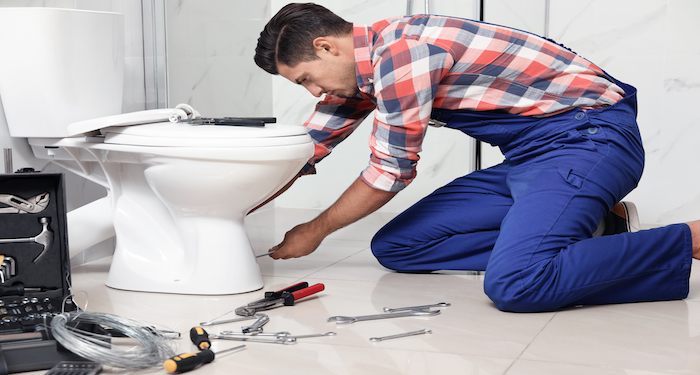
However, creating a new 'smallest room' out of accessible space in your home is a terrific way to improve the quality of your home life while also increasing the value of your home.
Spacious airing cupboards, space under the stairs, and corridor sections can all be converted to serve as an extra toilet.
Here we will go through the different supply costs to install an understairs toilet if you want to DIY or make the job cheaper and buy your own supplies.
First, you will need accessories such as a towel rail and a toilet roll holder. All the accessories will cost you £50 - £70 depending on how much you want. You will also need to buy a sink which will cost you £50 - £200.
A new toilet will cost between £100 and £200. New bathroom taps could very well cost between £40 and £100, and new floor tiles will cost between £10 and £20 per m².
The table below will go over the supply costs for an understairs toilet installation:
| Supply | Cost |
|---|---|
| Accessories | £50 - £70 |
| Sink | £50 - £100 |
| Toilet | £100 - £200 |
| Bathroom taps | £40 - £100 |
| Floor tiles | £10 - £20 per m2 |
What are the Additional Costs of Downstairs Toilet Installations?
Due to the numerous trades that can be involved with something as simple as installing a downstairs toilet, there are numerous additional costs that must be considered when installing an understairs toilet; we will go over the various additional costs here.
Plasterer
A plasterer will be needed for boarding, skimming the walls, and skimming the ceiling.
The most important factor that will impact the cost of plastering work is the size of the area to be plastered, whether that's a single wall in a small room or multiple rooms and ceilings in a large house.
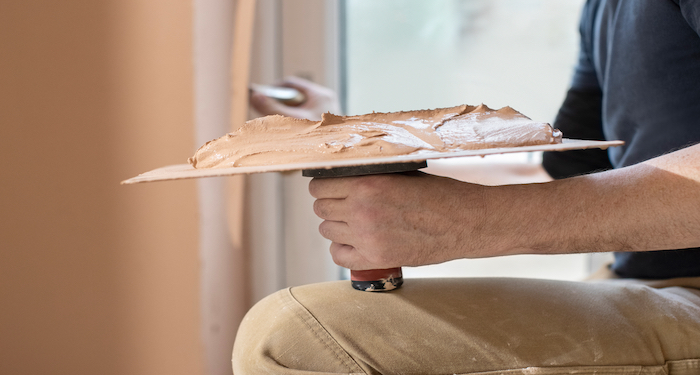
Plasterers will evaluate the job and consider any significant elements before estimating how long it will take as well as how much material will be needed. Of course, the cost of plastering will be measured by the amount as well as the difficulty of the work needed.
Prices will of course vary based on how long the job takes, which is typically one day for minor repairs and up to two days for plastering and skimming a wall.
Please refer to our guide on plasterer prices for further information.
Painter and Decorator
You'll need somebody to paint the walls, ceiling, and skirting boards, as well as the architraves and door. The typical cost of painting and decorating projects can vary greatly due to the nature of the work.
Painting and decorating costs approximately £160 - £180 per day on average, with pricing in London likely to be slightly higher.
However, asking a specialist painter about standard painter and decorator costs is a good place to start. The majority of day charges range between £150 - £200 per day.
Painting the walls and the ceiling of a small room (2.2m x 2.4m) will cost around £200 - £250 and take no longer than one day.
The total cost of the job is also affected by the size of the room. This is due to the large number of materials required. As a result, expect to pay between £200 - £300 for a small room.
Please refer to our guide on painter and decorator costs for further information.
Installing Flooring
Floor fitting is required for floor preparation work. The average flooring installation cost is between £400 - and £1,000 in most cases.
The cost of installing new flooring, on the other hand, will vary according to the type of flooring you want to install as well as the size of the room.
Tile flooring, which is ideal for this type of renovation, can cost between £75 - £1,000 for a small room.
Please refer to our guide on flooring installation costs for further information.
Joiner
For constructing, installing thermal insulation, fitting skirting boards, architraves, and hanging doors, you'll need to hire a joiner.
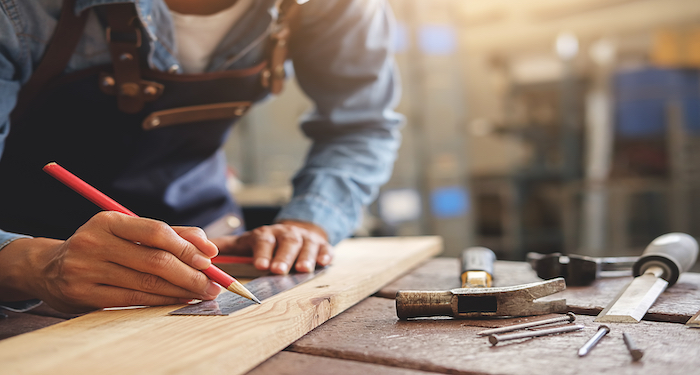
In the UK, the average hourly pay for a joiner is around £20 - £40. The costs of a joiner and a carpenter are usually about the same.
Please refer to our guide on joiner and carpenter prices for further information.
Wet Room Installation
If you decide to renovate under the stairs into an entire new bathroom, you may want to consider installing a wet room.
Wet rooms are not only ideal for elderly people or people with mobility issues. They are also great for after walks or gardening and can add value to your home. The typical cost of a wet room installation is between £4000-£7000.
Skip Hire
Average skip hire prices all depend on the size of skip you require.
- 2 Yard Skip - £60 - £120
- 4 Yard Skip - £100 - £260
- 6 Yard Skip - £110 - £238
- 8 Yard Skip - £150 - £375
- 10 Yard Skip - £170 - £250
- 12 Yard Skip - £220 - £450
- 14 Yard Skip - £200 - £300
- 16 Yard Skip - £220 - £420
- 18 Yard Skip - £275 - £400
- Roll-on Roll-off Skip - £290 - £400
Please refer to our guide on skip hire costs for further information.
Location
Because tradespeople's prices vary across the country, the cost of installing an understairs toilet will vary depending on where you live.
Hiring costs in the southeast, on the other hand, are typically higher than the national average, particularly in London. However, costs are generally lower in the north of England, Scotland, and Northern Ireland than in the rest of the country.
Amount of Tradespeople
The cost of installing an understairs toilet is determined by the number of tradespeople required, which is determined by the size/type of toilet desired. The greater the number of tradespeople required, the more costly the installation will most likely be.
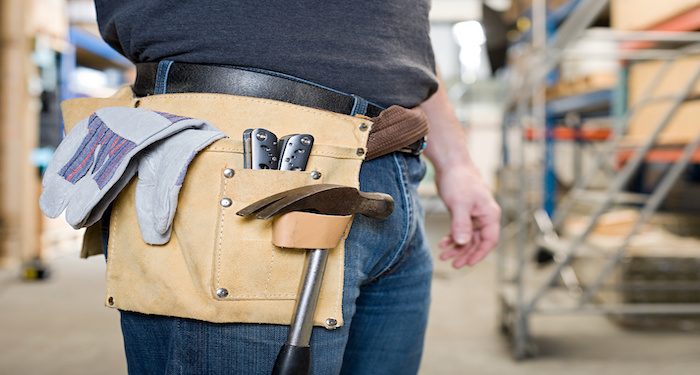
Duration
The higher the labour cost, the longer it takes to install the understairs toilet. The longer the hiring time frame, however, the more you will pay, with some homeowners needing to hire labourers for a few days, several weeks, or months.
Labour Cost to Install Downstairs Toilet
Hiring tradesmen is the safest way to install an understairs toilet as it gives you peace of mind that there will be no problems. So, sometimes it is best to hire labourers to get the job done.
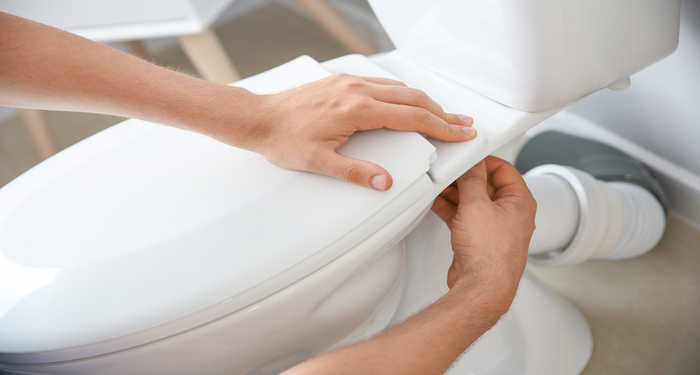
Here we will go through the different tradesmen costs to install an understairs toilet so you have an idea of what you should pay.
Fitting a new toilet as well as cold water hand basin outside, both attached to the plastic soil stack, with the flush and basin water supplied by the incoming water supply, with two men in two days, £400 - £650.
Install a simple stud wall or cubby hole behind the toilet. Install a hatch from the hallway into the newly enclosed space. Fix the plasterboard and plaster all around the new toilet. Install skirting and architrave. More than two days with two men costs between £300 and £700.
Fitting new double-glazed windows will cost £200 - £220, and connecting hot water to the basin will cost £325 to £350. It will cost £375 - £400 for the labourer to install a small radiator with a TRV.
Installing a downlight as well as internal pull switch costs between £200 and £230, while installing an extractor fan costs between £150 and £200.
Electrician Costs
An electrician will charge between £150 and £200 to box in pipework, cables, and metres. And it will cost £900 - £1,000 to dig a new hole nearby, link the wastes underground, and make good with two men in three days.
Plumber Costs
The cost of hiring a plumber varies according to where you live in the country as well as the type of service you provide. According to our data, the average plumber charges between £40 - and £80 per hour.
Plumbers' day rates range from £180 to £350 per day but expect to pay 20-30% more per day if the plumber is going to install an appliance in your home.
Plasterer Costs
Plasterers usually charge between £6 - £10 per m² of wall space, in addition to a daily fee of £100 - £150.
These prices will, of course, differ based on how long the job takes, which is typically one day for minor repairs and up to two days for plastering as well as skimming a wall.
Painter & Decorator Costs
A usual quote for hiring a painter and decorator usually ranges between £100 and £300 per day for big decorating jobs like painting and wallpapering multiple rooms.
The table below will break down the overall labour costs to install an understairs toilet.
| Job | Cost |
|---|---|
| New toilet and cold water sink outside | £400 - £650 |
| Installing a stud wall behind the toilet. | £300 - £700 |
| Fitting new double-glazed windows | £200 - £220 |
| Connecting hot water to the sink | £325 - £350 |
| Radiator | £375 - £400 |
| Light and switch | £200 - £230 |
| Extractor fan | £150 - £200 |
| Electrician | £150 - £200 |
| Plumber | £40 - £80 per hour |
| Plasterer | £100 - £150 per day |
| Painter and decorator | £100 - £300 per day |
How Long Does It Take to Install a Toilet Under the Stairs?
Easier jobs where the space is already there and the plumbing is simple may take a plumber a week. More complicated jobs involving many tradespeople may take two weeks or longer.
A plasterer will take 1 – 2 days to plaster your toilet under the stairs. The timescale of a decorating job is also essential because most tradesmen charge for their time. Therefore, understanding how long a job will take will help you determine the final price.
If you are having a small room painted like this, it should only take a day; however, if you need any wallpaper or paint removed, this will add an extra day.
To install flooring will take 3 – 6 hours.
The table below will breakdown the duration:
| Job | Duration |
|---|---|
| Installing downstairs toilet | Two weeks |
| Planning permission | Two weeks |
| Plastering | 1 – 2 days |
| Painting and decorating | One day |
| Flooring | 6 – 8 hours |
Required Building Regulations
You may need to submit a Building Notice or a full plans application to your local authority when installing an under stairs toilet. This applies especially if new plumbing or drainage is involved.
Always check with your local Building Control before starting work.
Building plans are usually approved for three years. If you don't start work within that time, your council could serve you with a notification declaring your plans "of no effect," requiring you to submit a new application.
Simple Installations vs Complex Renovations
Maximising space in a typical family home can be a daily challenge for homeowners. The shoe cupboard under your stairs, on the other hand, is an often overlooked area that can provide extremely valuable storage space or even a room.
Although there are numerous inventive understairs toilet ideas for transforming this space, each home is unique, and certain renovations will be more practical than others.
There's often a lot more to it than just hiring a plumber for a matter of days, which is where using a turnkey provider comes in handy.
A job to install a toilet under the stairs may not be straightforward. For example, it could entail:
- Moving through rooms and raising floor levels
- Coal shed doors are being bricked up
- The relocation of a boiler
- Excavation of the driveway to install drainage pipework
- Changing out an old cast-iron soil stack
- Utilities such as gas metres are being relocated
- Putting up new studs, insulating them, and boarding them up
- Installing a doorframe, hanging a door, and installing skirting and architraves
- Electrics are used extensively
- Plastering
- Decorating and painting
- Plumbing
Types of Understairs Toilets
You may be surprised to learn that there are several types of toilets in the industry. In terms of appearance, size, structure, functionality, and sanitation, they are all unique.
These types of toilets differ in price as well as efficiency, so being knowledgeable about them will help you choose the greatest toilet styles for your home.
We will go over the various types of toilets so that you can decide which one is best for you under the stair toilet.
Flushing Toilet
A simple explanation would be that when you press a button or pull a trigger, water flows down the pipeline. Then there's the flushing toilet. Another unique feature of a flushing toilet is the trap way’s "S, P, U, J" shape.
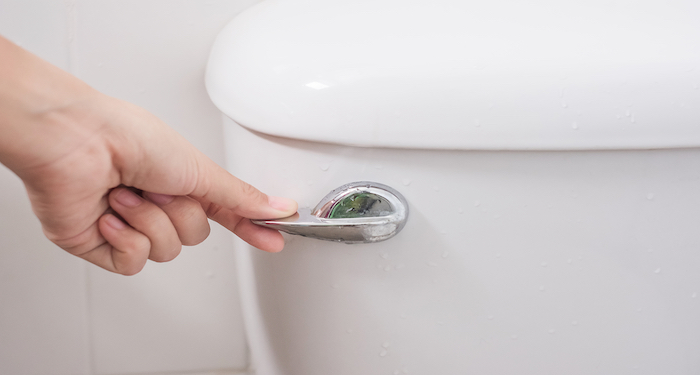
If there is a toilet available in modern society, it is most likely a flushing toilet. The "dry" toilet is the opposite of the flushing toilet, as it is obviously waterless and has an unusual disposal and sanitation process.
There are various flushing toilet types, each with its own distinct power and performance. These are all trademarks from different brands that consumers find appealing, especially if they are both powerful and quiet.
Pros
- Affordable
- Simple
Cons
- Most basic
One Piece Toilet
This is one of the toilet styles in which the toilet tank is attached to the bowl, resulting in the entire toilet being made of ceramic.
The obvious benefits of these toilet types are that the water tank is usually smaller, so there is no crevice in the middle, making it easy to clean. A small understairs toilet is often the best option for most smaller homes.
Buying a one-piece toilet typically includes a toilet seat, so it's not a problem. The only disadvantage is probably the price, but in time, it is worth it.
Another advantage of one-piece toilets is that they have a shorter breadth from the wall, and you don't have to worry about setting up the tank, bowl, and seat. The only installation procedure is to properly mount the toilet with the drain on the floor as well as the water supply on the wall.
Pros
- Easy to clean
- Easy to install
Cons
- Expensive
Two-Piece Toilet
This is most likely one of the most popular ones of toilets found across the continent. Compared to the one-piece toilet, the water tank and bowl are separated, allowing the tank to hold more water.
Although people nowadays prefer one-piece toilets, two-piece toilets have advantages. For example, one of the toilet types which can last for decades is one of the most important factors.
Other types of toilets are also durable, but the two-piece toilet is easy to repair and replace different parts on. You only need to be cautious of is the brand you choose.
Pros
- Durable
- Simple to repair/replace parts
Cons
- Must be careful of the brand
Small Compact Toilets
These toilets are intended for use in small bathrooms. Because of their small, compact designs, they are ideal if you want to save space or are having a hard time fitting a toilet in there.
They typically include wall-mounted toilets, toilets with no tank, or toilets that are only small. These toilets are ideal for tiny houses that require a tiny toilet understairs, RVs, motorhomes, and marine vessels. You now have more space in your bathroom for cabinets, plants, or other oddities.
Pros
- Perfect for a toilet under the stairs
- Affordable
Cons
- Not ideal for a big toilet
Corner Toilet
These toilets are commonly known as triangle toilets, and the reason for this is obvious: the water tank is in the shape of a triangle, allowing it to fit comfortably into a corner.
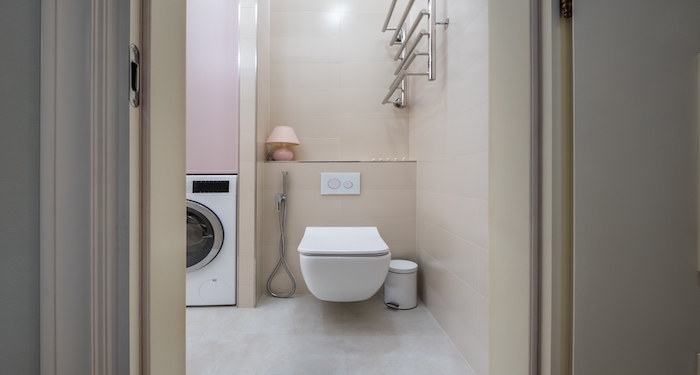
The obvious advantage of corner toilets is that they can fit into small spaces. However, these toilet types appear strange to some people and are rarely purchased unless there is a need for more space and design constraints.
The most important point is that it is difficult to find toilet styles with the right setting for a corner toilet that does not obstruct anyone's path. But you should think twice before making a decision on this one.
Pros
- Fits into a corner perfectly
- Good if you need more space
Cons
- Hard to find
- It can get in the way
Wall Mounted Toilet
When a wall-mounted toilet is mentioned, it normally means that the bowl is attached to the wall and is hung so that it does not touch the floor. The best thing about these toilets is that they look to be tankless.
However, the tank is hidden within the wall. A toilet with no tank and only a bowl hanging on the wall. It simplifies the cleaning process for you and removes the need to worry about tank leaks.
Switching from standard toilets to different toilets, such as wall-hung toilets, can be a pain. You'll need some assistance with the plumbing and installation to ensure that it's stable and immovable.
Pros
- Easy to clean
- Makes more space
Cons
- You will need a plumber's help
Tankless Toilet
These toilets are connected straight to the pipe, but when water is rushing down the pipes, these tankless toilet bowls have an electric pump that makes them flush more powerful.
Tankless toilets typically have a wider pipe than other types of toilets, which is due to the bowl requiring a greater depth of water to produce a clear flush.
The advantage of these toilet types is that they have a modern design and are much smaller in size. However, installation can be difficult at times, and if the battery dies, the toilet will not flush.
There are mechanically designed tankless toilets that do not require an electric pump, but they will not be as clean as a powerful flush and will require a large amount of water to push the waste down the pipe.
Pros
- Has a contemporary design
- Small size
Cons
- The battery could die, and the toilet can't flush
How Much Does Removing an Understairs Toilet Cost?
Removal of an under-the-stairs toilet can cost between £300 and £500, including the cost of gutting and waste disposal. If you want to remodel an existing room in your home, make sure that all previous furnishings, as well as fittings, have been properly removed.
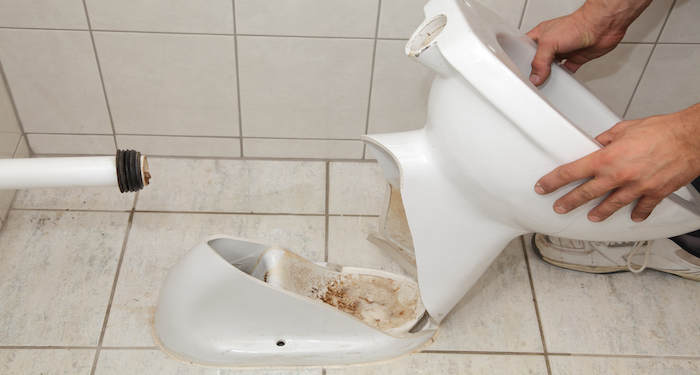
Workers will tear out any floor tiles, plumbing, electrics, and fittings to accomplish this, which can take several days to vary according to the size of the room.
Although DIY removal is possible, it is always best to seek the assistance of a professional tradesman, especially when it comes to electrics and plumbing. This is to protect yourself, your family, and your home from any potential harm.
FAQs
Q: How much space do you need for an understairs toilet?
A: At the very least, you'll need a space that measures 70cm wide by 130cm long. A layout of around 80cm x 140cm will give you a bit of room to play with for a comfortable space that's not awkward to use.
Q: How much value will it add?
A: By adding a downstairs toilet extension, you can increase the value of your home by 5%. Even a cloakroom-sized toilet on the lower level of your home will make it more appealing to buyers and add value when it comes time to sell.
Q: Do I need planning permission for a toilet under the stairs?
A: Unless it is part of a larger extension, adding a downstairs toilet to your home usually does not necessitate planning permission.
This varies depending on where you live and whether your property is in a conservation area or has historical significance. Building codes must be followed when installing a new toilet.
Q: Does a toilet under the stairs need a window?
A: According to building codes, every bathroom should have a window, airflow, or both. It's also critical that the new waste for the toilet is attached to your waste pipe, so the new WC should be near outdoor drainage.
Q: What toilet would be best for under the stairs?
A: To enhance available floor space, we recommend installing wall-hung toilets and sinks. Furthermore, hang the basin on the tallest wall in your understairs suite to provide as much standing room as possible when washing hands.

